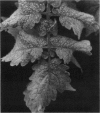Abstract
The regulation of nonpathogenic tumorous growths on tomato plants by red and far-red radiation was studied using leaf discs floated on water and irradiated from beneath. It was found that red light (600-700 nanometers) was required for the induction of tumors on tomato (Lycopersicon hirsutum Humb. & Bonpl. Plant Introduction LA 1625), while both blue (400-500 nanometers) and green (500-600 nanometers) light had little effect on tumor development. Detailed studies with red light demonstrated that tumor development increased with increasing photon flux and duration, though duration was the more significant factor. It was observed that tumor development could be prevented by the addition of far-red irradiance to red irradiance or by providing far-red irradiance immediately following red irradiance. The effectiveness of red and farred irradiance in the regulation of tumor development indicates phytochrome involvement in this response. These findings should provide additional insight into the multiplicity of physiological factors regulating the development of nonpathogenic tumorous growths in plants.
Full text
PDF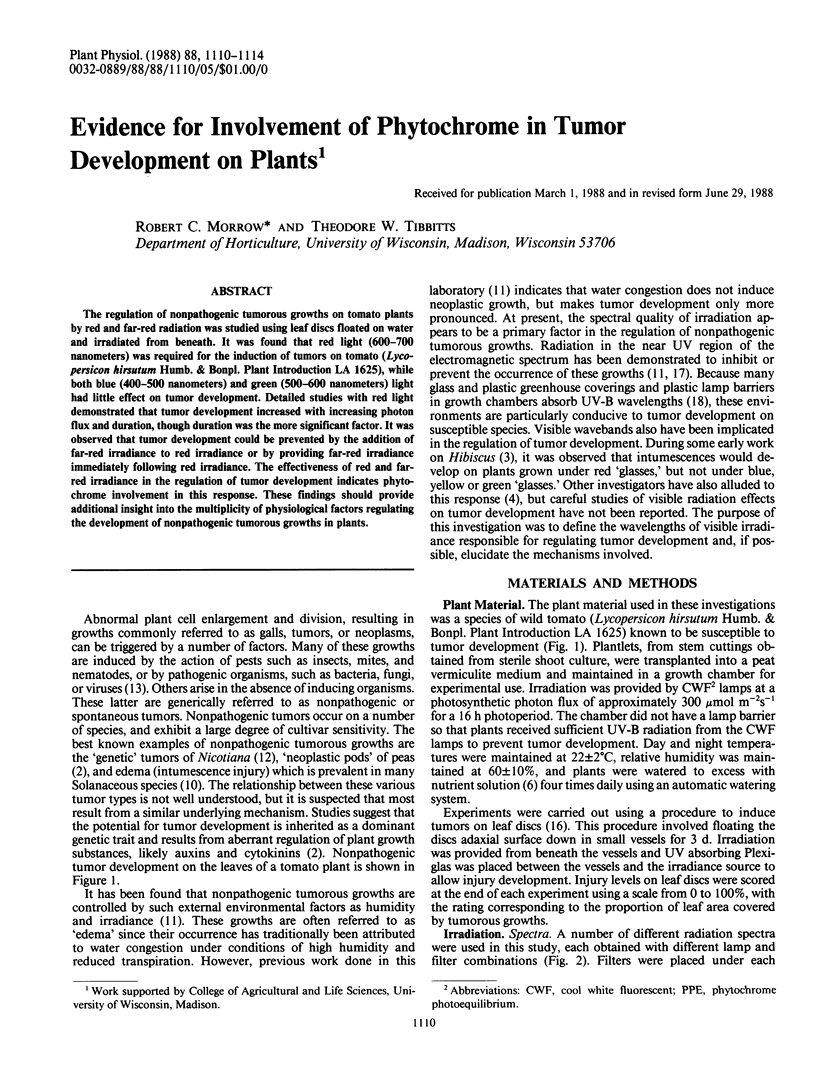
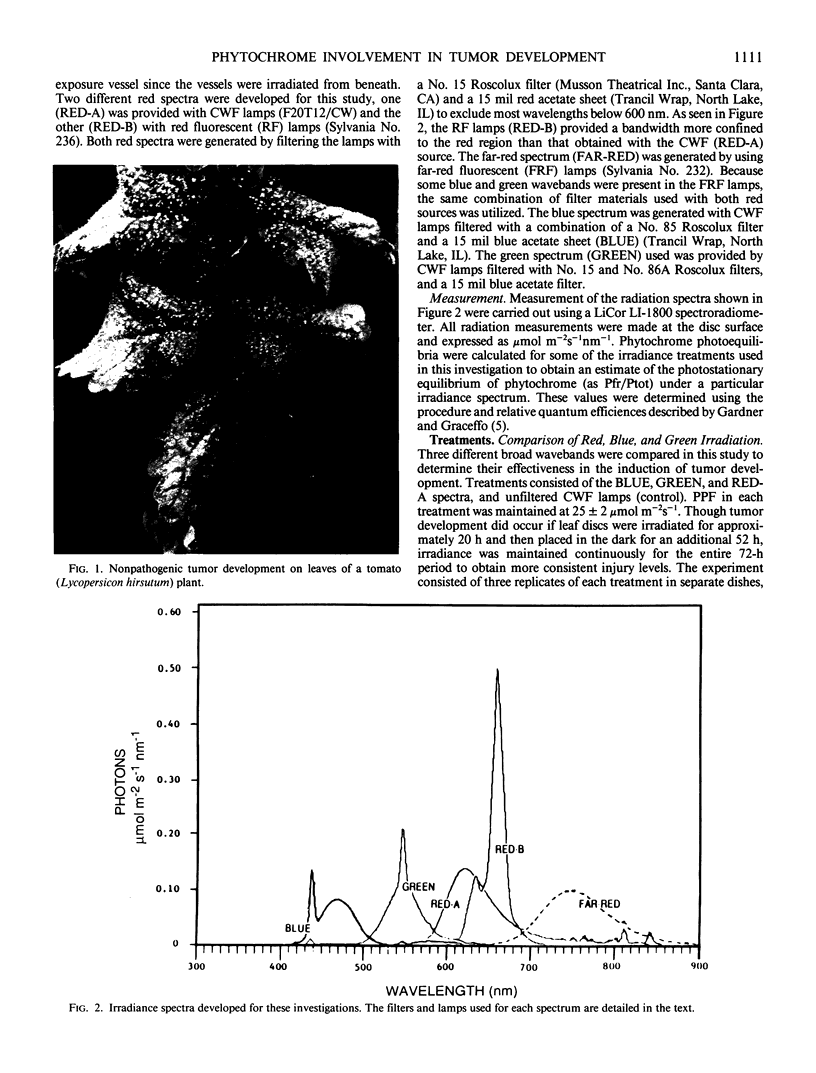
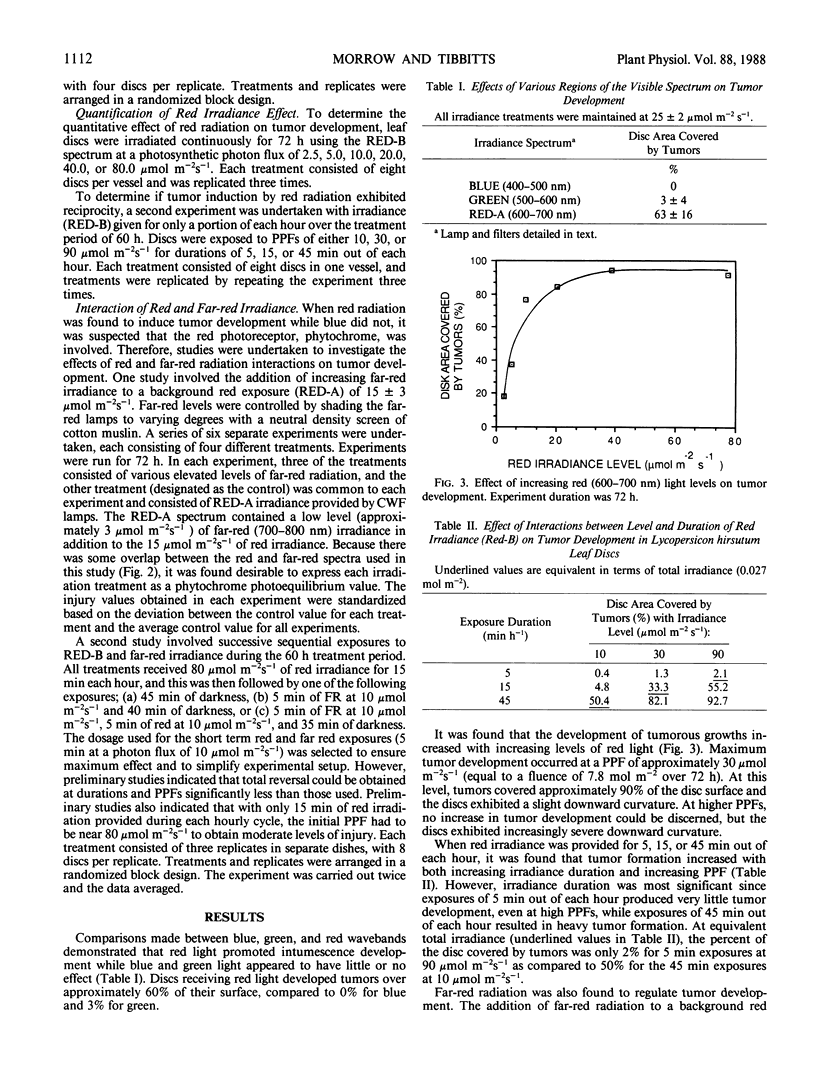

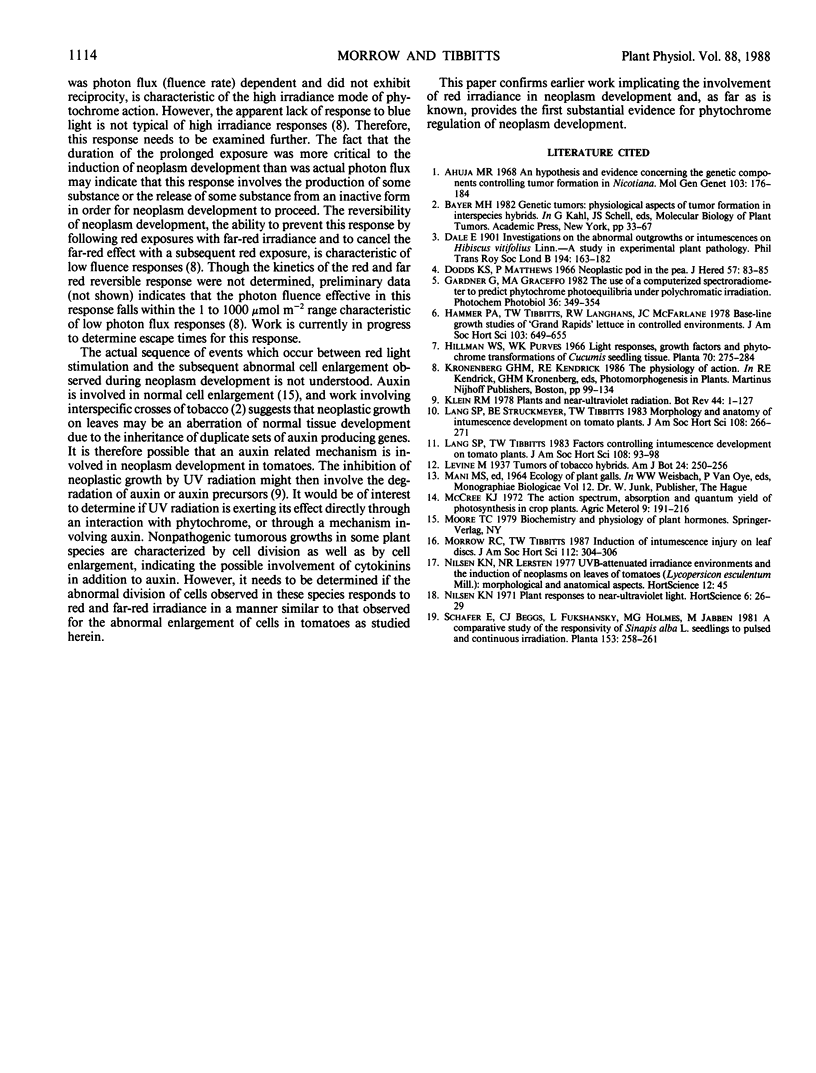
Images in this article
Selected References
These references are in PubMed. This may not be the complete list of references from this article.
- Ahuja M. R. An hypothesis and evidence concerning the genetic components controlling tumor formation in Nicotiana. Mol Gen Genet. 1968;103(2):176–184. doi: 10.1007/BF00427144. [DOI] [PubMed] [Google Scholar]



